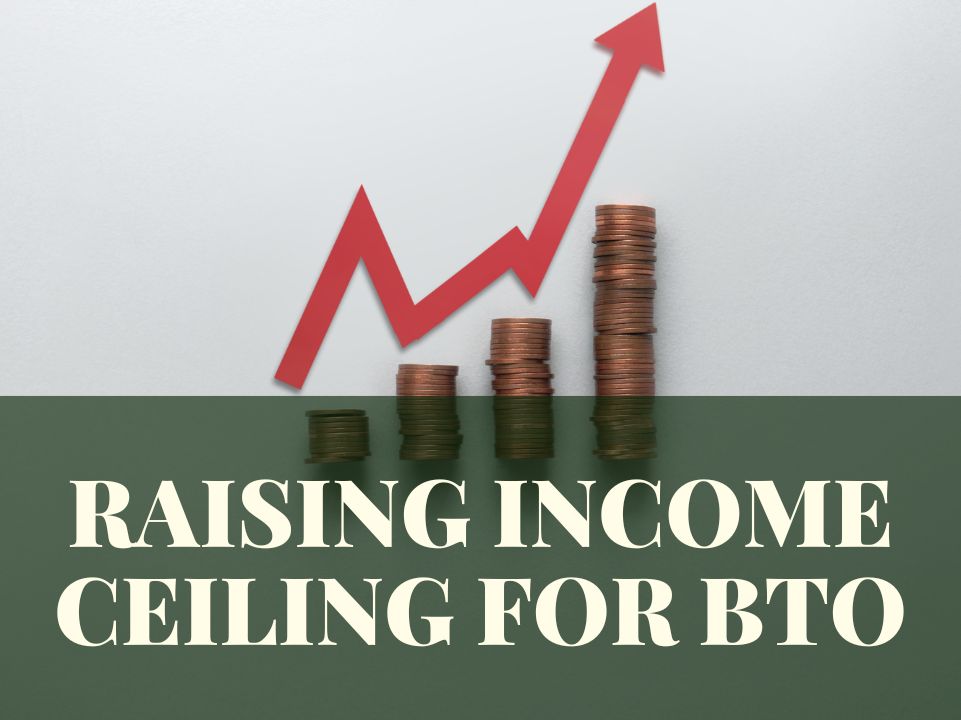Raising Income Ceiling for HDB BTO and EC
As of time of writing, the income ceiling for new HDB BTO flats is S$14,000/month for families and married couples. For Executive Condominiums (ECs), the ceiling is S$16,000/month.
The government has signalled that they “will raise income ceilings when the time is right”, keeping an eye on household income growth and property market conditions.
There are ongoing discussions about reviewing eligibility conditions, including income ceilings, and possibly implementing fixed intervals for revisions.
What Raising the Income Ceiling Means for Buyers - The Positive Effects
1. More Households Become Eligible
Middle-income earners who currently exceed the ceiling can access subsidised new flats (BTO) or ECs. This helps buyers who are “sandwiched” — not low-income enough for heavy subsidies, but not earning private housing money.
2. Reduced Pressure to Move to Resale or Private
Many buyers who exceed the income ceiling now opt for resale HDB flats or private housing because the BTO/EC route is blocked. Raising ceilings allows more options.
3. Fairer Matching with Income Growth & Inflation
As median household incomes have risen, the ceiling lagging too far behind means many are locked out unfairly. Adjusting it helps keep the system aligned with the economy.
4. Potential for More Variety in New Flats
With more eligible buyers, developers / HDB might consider launching wider variety (flat types, locations) to meet demand.
Risks / Trade-Offs for Buyers
1. Higher Competition
2. Affordability Pressure
Even if eligible, some households may struggle with affordability: down payments, loan servicing, or monthly payments may still be heavy depending on the flat’s cost, interest rates, etc.
3. Subsidy Eligibility Might Be Affected
Raising the ceiling might mean fewer subsidies or grants for some households; or the tapering thresholds might be adjusted. So even if someone is eligible, their net cost could be higher.
What It Means for the Broader Market
1. Increased Demand for New HDB / EC Launches
More eligible buyers will push demand up. This might help take-up rates in new launches (BTO / EC).
2. Possible Pressure on Prices
With more demand, especially for popular locations, prices or premiums (via oversubscription) may creep up. Sellers of resale flats may benefit.
3. Shift in Resale Flat Market
4. Supply-Demand Calibration Needed
5. Policy Adjustments
Risks for the Market
1. Crowding Out Lower-Income Buyers
If the income ceiling is raised but nothing else changes (e.g. priority for low-income groups, quota systems), higher-income households might crowd out those with less means in demand for the more desirable projects.
2. Strain on Infrastructure
More demand means more stress on MRT lines, roads, services, schools in estates with high demand. If infrastructure doesn’t scale in tandem, living quality might suffer.
3. Speculative Demand
Some may anticipate future increase in demand and apply even if not needing the flat immediately, which could distort demand.
4. Subsidy Burden on Government
What Buyers & Sellers Should Do / Consider
If you’re close to the current income ceiling, keep an eye on announcements - you may become eligible soon, so plan accordingly.
-
Even if eligible, run your affordability numbers carefully: loans, grants, monthly payments.
-
For hdb owners, anticipate demand shifts - more potential bidders for BTO / ECs could reduce resale demand in certain segments, or temporarily weaken them.
Conclusion
Raising the HDB income ceiling eligibility would be a significant move. It’s likely to expand access for many households, especially those who’ve outgrown the old limits but can’t afford private housing.
But to make it work well, the policy needs to come with safeguards such as balancing access, managing competition, preserving affordability, and ensuring supply keeps up.

